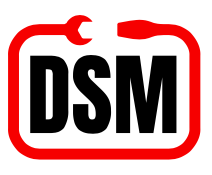
DSM Online Support
Support Master
Welcome to DSM Online
How can I help you today
How can we assist you? please let us know the support you need from DSM Online

Ever built a circuit, uploaded your code, and waited in anticipation—only to realize you have no idea what’s happening inside your microcontroller? Maybe your code is running perfectly… or maybe it’s crashed in silence. You need feedback. You need visibility. That’s where the LCD1602 I2C Blue and White Display (Soldered) steps in like a trusty sidekick. It’s not flashy—but boy, is it powerful.
If you’re into Arduino, Raspberry Pi, robotics, home automation, or really any embedded project, this display is a must-have. It's compact, readable, beginner-friendly, and—thanks to the I2C interface—it doesn’t hog all your GPIO pins. Basically, this thing is the bread-and-butter display module your projects have been craving.
First, let’s talk name. The “LCD1602” refers to its ability to show 16 characters across 2 lines. Simple. But elegant. That’s enough to show temperature readings, sensor statuses, Wi-Fi connection info, and cheeky “Hello World” messages. And the I2C part? That’s what makes this display magical for makers.
Traditionally, LCDs like this required up to 8 wires to function. That’s half your GPIOs on an Arduino Uno. The I2C version cuts it down to just 2 wires—SDA and SCL—without sacrificing any of its core functionality.
And the best part? The soldered I2C backpack is already attached. No hassle. No soldering iron. Just plug and go.
Let’s break it down. Here’s what this little guy is doing under the hood:
Character Display Engine: The module is driven by the HD44780 controller—a legendary chip that handles all the formatting, cursor positioning, and refreshing for you.
I2C Interface Magic: Thanks to a tiny onboard PCF8574 I/O expander chip, it listens to I2C communication and translates it into commands for the LCD.
Backlit Brilliance: The blue background with crisp white characters is easy to read even in dim lighting, making it perfect for both workbenches and embedded enclosures.
There are a lot of display options out there. So why should the LCD1602 I2C Blue and White (Soldered) module be your go-to?
Only two signal wires. That’s a blessing when you’re juggling sensors, relays, or other modules in your project.
No header pins to install. No I2C backpack to attach. This display is ready to go straight out of the package.
The Arduino IDE has the LiquidCrystal_I2C library, and the Raspberry Pi community supports it via Python libraries. You won’t need to write a driver from scratch.
Whether you're a student building your first robot or a hobbyist automating your hydroponics setup, this display is intuitive, forgiving, and educational.
You get clear visual output for your project without burning through your budget. For just a few bucks, it makes your whole system smarter and more user-friendly.
This humble display isn’t just for show—it’s a workhorse. Here’s where you’ll see it really shine:
Weather Stations: Display live temperature, humidity, and pressure readings with ease.
Home Automation Panels: Show light status, fan speed, or security system alerts.
IoT Prototyping: Debug data in real time without needing to connect to a serial monitor.
Educational Kits: A staple in Arduino starter kits for good reason—it teaches input/output like a champ.
3D Printers: Many budget 3D printers use LCD1602s for displaying status and print progress.
Sensor Dashboards: Monitor gas levels, motion, or any sensor input right on the display.
Find the Right Address: Each I2C module has a default address (often 0x27 or 0x3F). Use an I2C scanner sketch to find yours.
Connect Correctly: SDA goes to A4 and SCL to A5 on an Arduino Uno. Other boards may vary.
Adjust Contrast: There’s a tiny potentiometer on the back. If your screen is blank, tweak it.
Use the Right Library: Install LiquidCrystal_I2C and include it in your code. Life’s too short for writing drivers from scratch.
The LCD1602 I2C Blue and White Display (Soldered) might not be the flashiest part of your circuit, but it’s absolutely one of the most useful. It turns blinking LEDs and cryptic serial output into real, readable data. It gives your project a face, a voice, and a way to say, “Hey, I’m working!”
Whether you’re building an automatic plant waterer, a smart clock, or just want to display “System Online,” this module delivers every time.
Small, affordable, and packed with potential—it’s the kind of display every electronics enthusiast should have in their drawer.